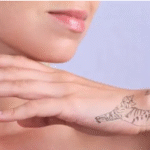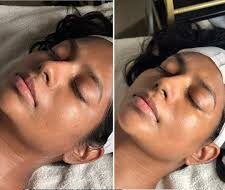Laser Tattoo Removal: A Comprehensive Guide
What is Laser Tattoo Removal?
Laser tattoo removal is a safe and effective cosmetic procedure that uses high-intensity light beams to break down tattoo ink into smaller particles, which are then naturally eliminated by the body’s immune system. The process typically requires multiple sessions and is performed by trained dermatologists.
How it Works
A high-intensity laser is directed at the tattooed area, delivering energy to the ink pigments. The ink particles absorb the laser energy and shatter into tiny fragments. The body’s lymphatic system then gradually clears away these microscopic particles. Over a series of treatments, the tattoo fades until it is no longer visible or is light enough for a cover-up.
Types of Lasers
- Q-Switched Lasers: Traditional lasers that deliver energy in nanosecond pulses, effectively breaking down tattoo pigments.
- Pico Lasers: Advanced PicoSure lasers use ultra-short picosecond pulses to shatter ink into finer particles, often resulting in faster removal, fewer sessions, and less downtime compared to Q-switched lasers.
What to Expect During Treatment
- Consultation: A specialist will assess your tattoo, skin type, and overall health to create a personalized treatment plan.
- Session: The area will be cleaned, and protective eyewear will be provided. The laser handpiece is placed against the skin and activated, delivering light pulses over the tattoo.
- Sensation: Many patients compare the feeling to a rubber band snapping against the skin. Numbing creams or cooling devices are often used to minimize discomfort.
- Duration: Sessions can last from 10 minutes to an hour or more, depending on the tattoo’s size.
Factors that Influence Results
Several variables determine the effectiveness and duration of the removal process:
- Ink Color: Darker inks, particularly black and dark blue, absorb laser energy more effectively and are often easier to remove. Lighter colors like green and yellow are more difficult.
- Tattoo Age: Older tattoos generally fade more quickly than newer ones, as the ink has already been broken down by the body over time.
- Location: Tattoos on areas with more blood circulation, such as the neck and chest, tend to fade faster than those on areas with less circulation, like the ankles.
- Tattoo Quality: Professional tattoos, which have deeper and more concentrated ink, typically require more sessions to remove than amateur tattoos.
- Skin Tone: The specialist will adjust laser settings based on your skin tone to ensure the safest and most effective treatment possible.
Aftercare and Risks
- Aftercare: Apply an ice pack and a topical antibiotic ointment, keep the area clean, and protect it from sun exposure.
- Side Effects: Temporary redness, swelling, and blistering may occur.
- Risks: Rarely, scarring or pigmentation changes may occur. Follow aftercare instructions carefully to minimize complications.
Cost
The total cost depends on the number of sessions required, the tattoo’s size and complexity, and the type of laser used. Most tattoos require 5 to 10 sessions or more to achieve optimal results.
How it Works
Consultation and deep cleansing
Advanced exfoliation
Extraction and targeted treatment
Nourishment and hydration
Finally, a blend of medical-grade serums rich in antioxidants, peptides, and vitamins is infused deep into the skin. A final mask or moisturizer is applied to soothe, hydrate, and protect the skin, locking in moisture and nutrients.


have a question?
Quick answers to questions you may have
How is a medifacial different from a regular salon facial?
Medifacials are performed under the supervision of a dermatologist and use medical-grade products and devices for more targeted, long-lasting results. Regular facials mainly focus on surface-level cleansing, offer temporary results, and are primarily for relaxation. Medifacials address underlying skin issues at a cellular level, while salon facials typically do not.
